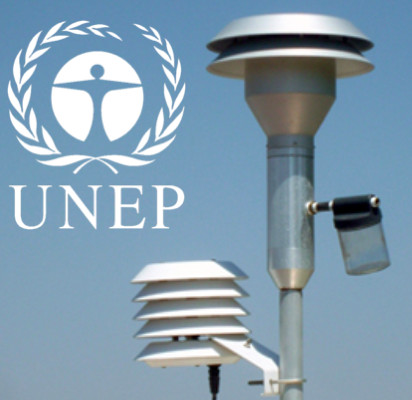
It is almost two months since our colleagues from the UNEP have been making an interesting move towards promoting the idea that Air Quality is as important as any other business within the United Nations. They started to invest in this domain, and came up with the excellent initiative to create an open footprint for affordable Air Quality Monitoring Stations.
Last August 31st, in a press release, the UNEP DEWA team released an exciting information about their new project, an innovative Air Quality Monitoring station which they co-developed with Nairobi University, and will cost as little as 1.5KUSD per unit. That's at least 10 times cheaper than the traditional BAM and TOEM which one can find at about 15K or more on the market (pure purchase price, maintenance and consumable excluded!). And considering that the UNEP monitoring station is also able to sense much more pollutant like Ozone, NOx and SOx, that makes it really cheaper than the overall traditional solutions. Really big thanks to the UNEP DEWA for pushing this forward and making it an open blueprint solution for all.
So far, what we know about the device is that it will look like something similar in this picture:

--
While we are waiting for the UNEP to make an official release for the first blue prints, we have been doing a bit of reverse engineering from all the information we gathered. The device specification is really impressive:
The monitor is using a 12V power supply - only missing information is how long the monitor can last with a standard 12V battery pack, but that's something the UNEP DEWA and Nairobi University is most likely optimizing now.
From the pictures available from the press release and the leaflet, this is our best understanding on how things are packed within the box.

Fortunately the UNEP will soon release the footprints so that every one can share the benefits of the excellent initiative that the UNEP DEWA team has been leading.
Meanwhile, in order to also contribute to the movement started by the UNEP, we have decided to release all the information accumulated during the past several month ago about new Particulate Matter Air Quality sensors. We do believe that this is extremely important as different sensors tends to give different readings even when collocated, and that can be a big headache when having to inform the citizen about the current air pollution levels.
All the live testing experimentation from our sensors (which are currently all collocated in Beijing), together with the explanation about the different sensors and experiment setup can be found from this link: sensor. Note this is an on-going work: more sensors will be added as soon as we get hold of new ones. Feel to use the live data feed in the way you want, our primary objective is to increase the awarness and common know-how about Air Quality sensing.
--
For more information about the UNEP Air Quality Monitoring station, you can contact Sami Dimassi, Chief at the Country Outreach, Technology and Innovation Branch of the DEWA (Division of Early Warning and Assessment), UNEP Nairobi. Website: uneplive.unep.org


